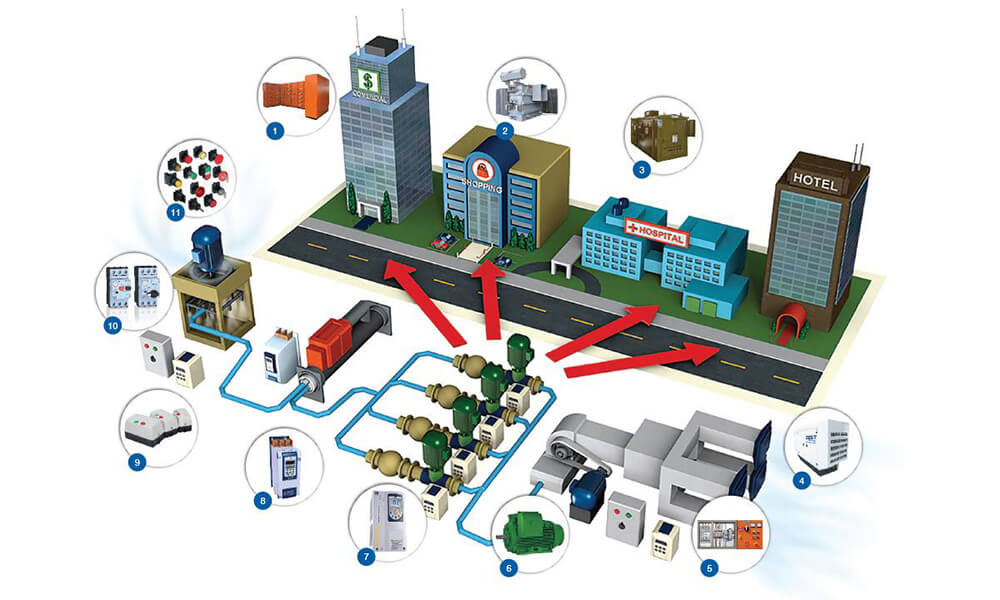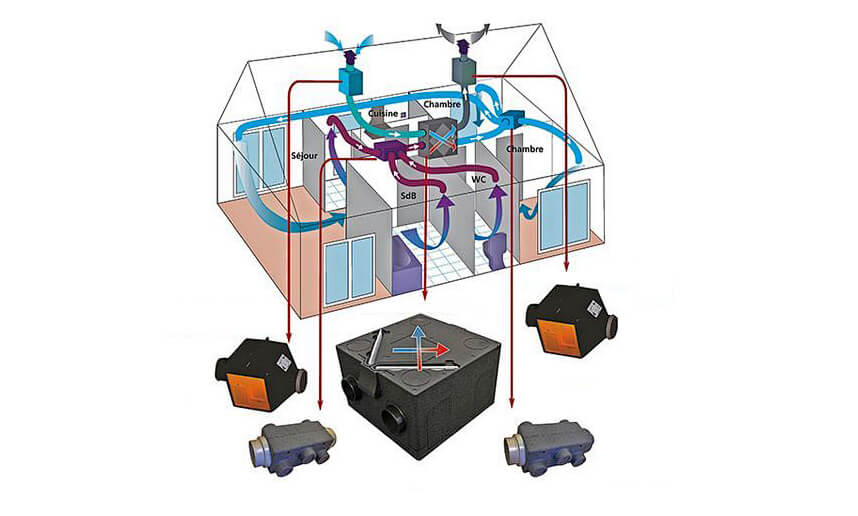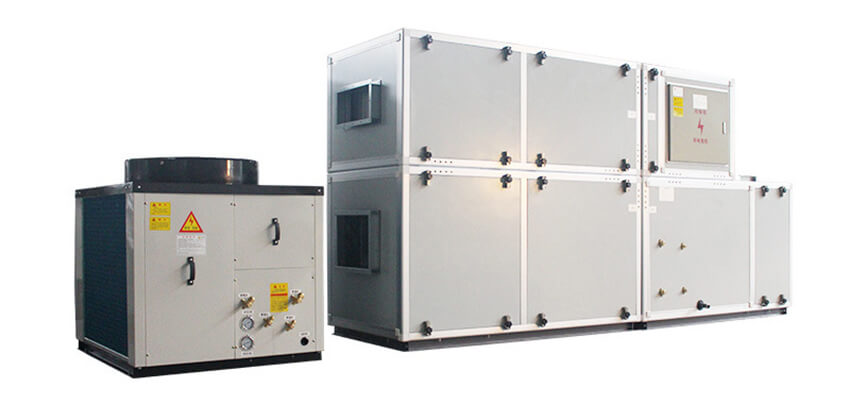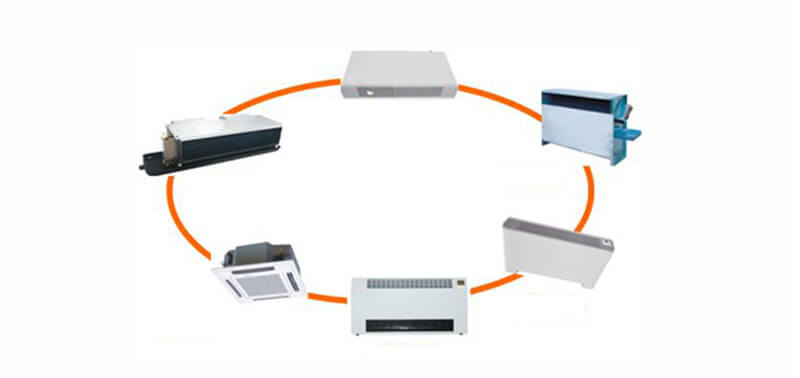Forced-air and central-air HVAC systems both heat and cool homes, but in different ways. Forced-air systems use a furnace and a fan to blow heated air through ducts into rooms. Central air systems, usually part of forced-air systems, specifically cool air and send it through the same ducts. The main difference is that forced-air systems can only heat, while central-air systems can only cool. Often, central air is added to forced-air systems to have both heating and cooling from one system.
This article aims to explore, compare, and contrast forced-air and central-air HVAC systems, delving into their workings, benefits, and drawbacks.
Let’s take a look at a video for reference:
Overview of HVAC Systems
Before delving into specific types of systems, a basic understanding of HVAC systems and their common elements is essential.
Defining HVAC Systems
- Integral to Indoor Comfort: HVAC systems are complex networks designed to regulate indoor temperature and air quality, making them essential for comfort and health in residential and commercial buildings.
- Core Components: These systems typically consist of a heating unit (like a furnace), a cooling unit (such as an air conditioner), ductwork, vents, and a controlling thermostat.
How HVAC Systems Function
- The Cycle of Heating and Cooling: HVAC systems operate by circulating air through a series of processes – heating or cooling it as required, then distributing it throughout the space via ducts and vents.
- Maintaining Air Quality: Apart from temperature control, these systems also filter and purify air to maintain optimal indoor air quality.

Understanding Forced-Air Systems
Exploring a Popular Choice in Home Heating and Cooling: In the diverse landscape of HVAC solutions, forced-air systems stand out as a popular choice in many homes. This section delves into what constitutes a forced-air system and how it operates.
Defining Forced-Air HVAC Systems
- A Comprehensive Climate Control Solution: Forced-air systems are HVAC setups that use air as the primary medium for heating and cooling the home.
- Key Components: Central to these systems are a furnace or heat pump, air ducts, vents, and a thermostat for control.
How Forced-Air Systems Function
- Heating Process: In heating mode, air is heated in the furnace and then propelled through ductwork into different rooms via vents.
- Cooling Capabilities: For cooling, these systems often integrate with an air conditioner, where air is cooled in the evaporator unit before being distributed.
Characteristics of Forced-Air Systems
- Rapid Temperature Adjustment: These systems are known for their ability to quickly alter room temperatures due to the direct circulation of treated air.
- Air Filtration and Humidity Control: Many forced-air systems include filters and humidifiers/dehumidifiers to enhance air quality and comfort.
Advantages of Forced-Air Systems
- Efficient Heating and Cooling: They provide an efficient way to heat and cool homes, often using a single blower for both processes.
- Air Quality Improvements: With the inclusion of advanced filters, these systems can significantly improve indoor air quality.
Installation and Maintenance
- Installation Considerations: The installation of a forced-air system involves setting up a furnace, ductwork, and vents, which can be a complex process.
- Regular Maintenance Required: To keep these systems running efficiently, regular maintenance such as filter changes, duct cleaning, and system inspections are necessary.
Understanding for Better Home Climate Management: Grasping the workings of forced-air HVAC systems is crucial for homeowners considering this option for their heating and cooling needs. It offers a blend of efficiency, rapid climate control, and air quality benefits.
Exploring Central Air Systems
A Deep Dive into Dedicated Cooling Solutions Central air systems: are a cornerstone in modern climate control, specifically designed for cooling. This section explores the ins and outs of these systems, widely used for their cooling efficiency in residential and commercial settings.
Defining Central Air Systems
- Focused on Cooling Comfort: Central air systems are specialized HVAC systems primarily designed to cool indoor spaces.
- Core Components: These systems typically comprise an outdoor air conditioning unit, indoor evaporator coils, a network of ducts, and a thermostat for control.
The Cooling Process in Central Air Systems
- Air Conditioning Cycle: Central air systems cool air using refrigerants in the outdoor unit, transferring cooled air through the indoor evaporator coil and distributing it via ducts and vents.
Characteristics of Central Air Systems
- Uniform Cooling: These systems are adept at providing consistent cooling throughout the entire building.
- Integrated with Heating in Some Cases: While primarily for cooling, they can be integrated with a furnace or heat pump for heating, creating a comprehensive climate control solution.
Benefits of Central Air Systems
- Effective Temperature Management: Central air systems are known for effectively managing and maintaining desired temperatures.
- Improved Indoor Air Quality: Like forced-air systems, they often include air filters and can be equipped with additional air quality enhancements.
Installation and Maintenance
- Professional Installation Required: The setup of a central air system, particularly the outdoor unit and ductwork, typically requires professional installation.
- Maintenance for Longevity: Regular maintenance, such as cleaning filters, inspecting refrigerant levels, and professional servicing, is crucial to ensure efficiency and longevity.
Central Air Systems: Cool and Consistent Comfort: Understanding central air systems is essential for homeowners and property managers looking for efficient, consistent, and reliable cooling solutions. These systems stand out for their ability to maintain even temperatures and good air quality across larger spaces.

Comparing Forced-Air and Central Air Systems
Distinguishing Between Two Primary HVAC Approaches: When choosing an HVAC system, understanding the differences between forced-air and central-air systems is crucial. This section offers a comparative analysis to aid homeowners in making an informed decision.
Functionality and Scope
- Heating and Cooling vs. Cooling Only: Forced-air systems provide both heating and cooling options, whereas central-air systems are primarily designed for cooling.
- System Integration: Central air systems can sometimes be integrated with heating systems, but their primary function is cooling.
Component Differences
- Presence of a Furnace: Forced-air systems include a furnace for heating, which is absent in typical central air systems.
- Outdoor Unit: Central air systems always have an outdoor condenser unit, while forced-air systems may use this only for air conditioning.
Air Distribution and Flow
- Ductwork Usage: Both systems typically use a network of ducts for air distribution, but the way they circulate air differs. Forced-air systems push heated air in winter and may use the same blower for cool air in summer, while central air systems are dedicated to distributing cool air.
- Airflow Control: Forced-air systems offer more control over airflow with the ability to adjust vents for heating and cooling.
Energy Efficiency and Cost
- Energy Consumption: Forced-air systems might consume more energy, particularly if they’re used for both heating and cooling. Central air systems are optimized for efficient cooling.
- Installation and Operational Costs: The cost of installing and operating these systems varies. Forced-air systems might have higher initial installation costs due to the furnace but can be more cost-effective if a heating solution is also needed.
Maintenance Requirements
- Forced-Air System Maintenance: Requires regular cleaning of ducts, filters, and furnace maintenance.
- Central Air System Maintenance: Focuses more on the outdoor unit, evaporator coils, and keeping ducts clean.
Choosing the Right System for Your Needs
- Climate Considerations: In cooler climates where heating is as important as cooling, forced-air systems may be more practical. In warmer climates, central air systems could be more efficient.
- Space and Layout Considerations: The layout and size of the home can also influence the choice between these two systems.
Pros and Cons of Each System
Weighing the Advantages and Disadvantages of Forced-Air and Central Air Systems To make an informed decision, it’s essential to understand the pros and cons of both forced-air and central-air systems.
Pros of Forced-Air Systems
- Dual Functionality: Provides both heating and cooling, offering a comprehensive climate control solution.
- Air Filtration: Often includes a built-in filtration system that can improve indoor air quality.
- Cost-Effective for Combined Heating and Cooling: Can be more economical if both heating and cooling are required.
Cons of Forced-Air Systems
- Potential for Uneven Heating/Cooling: Air distribution can be uneven in larger or multi-story homes.
- Noise: The blower fan can be noisy, especially in older systems.
- Ductwork Maintenance: Requires regular cleaning and maintenance of ducts to ensure efficiency.
Pros of Central Air Systems
Efficient Cooling: Specifically designed for cooling, offering efficient and even temperature control.
- Quieter Operation: Generally operates more quietly compared to forced-air systems.
- Less Invasive Ductwork: This can be integrated with existing forced-air system ductwork.
Cons of Central Air Systems
- Cooling Only: Doesn’t provide heating, requiring a separate system for warmer months.
- Cost: Initial installation can be expensive, especially if ductwork needs to be added or upgraded.
- Outdoor Unit Space Requirements: Requires space for the outdoor condenser unit.

Energy Efficiency and Cost Considerations
Analyzing the Economic and Environmental Impact of Each System Energy efficiency and cost are significant factors in choosing between forced-air and central-air systems.
Energy Efficiency
- Forced-Air Efficiency: This can vary depending on the furnace’s efficiency and how well the home is insulated and sealed.
- Central Air Efficiency: Modern central air systems are designed for high efficiency, but performance depends on correct sizing and installation.
Cost Implications
- Installation and Operational Costs: Forced-air systems might have higher upfront costs but can be more economical in the long run if heating is also needed. Central air systems have lower heating costs but might require additional heating solutions.
Choosing the Right System for Your Home
Making an Informed Decision Based on Individual Needs: Selecting the right HVAC system depends on your specific home requirements and preferences.
Consider Your Climate
- Forced-Air Systems in Cold Climates: Ideal in regions with cold winters, providing efficient heating and cooling.
- Central Air Systems in Warm Climates: More suitable for areas with hot summers and mild winters.
Assessing Home Layout and Size
- Space and Ductwork Considerations: The size and layout of your home can impact the effectiveness of each system. Consider the feasibility and cost of installing or upgrading ductwork.
Personal Preferences and Long-Term Goals
- Comfort vs. Cost: Balance your desire for comfort, convenience, and noise level with budget considerations.
- Future-Proofing: Consider long-term goals, like energy savings and home resale value, when choosing a system.

Conclusion
As we conclude our exploration of forced-air and central-air HVAC systems, it’s clear that each system offers distinct features and benefits tailored to different needs and environments. The decision between the two hinges on a variety of factors, from climate and home layout to personal preferences and long-term goals.
Key Insights Revisited
- Comprehensive Climate Solutions: Forced-air systems stand out for their versatility in providing both heating and cooling, making them ideal for regions with varied climates.
- Specialized Cooling Efficiency: Central air systems excel in delivering efficient and uniform cooling, particularly suited for areas with hotter climates.
Balancing Factors for Optimal Comfort and Efficiency
- Energy Efficiency and Cost Considerations: Weighing the energy efficiency against the initial and operational costs is crucial in determining the most cost-effective and environmentally friendly option.
- Personal Comfort and System Maintenance: Consider your comfort preferences, including noise levels and air quality, along with the maintenance requirements of each system.
Guiding Homeowners to the Right Choice
- Assess Individual Needs: The choice should be based on a careful assessment of your specific home environment, climate conditions, and budget.
- Seek Professional Advice: Consulting with HVAC professionals can provide valuable insights and help tailor the decision to your unique situation.
Empowering Informed HVAC Decisions for Homeowners: Ultimately, whether you choose a forced-air system or a central air system, the goal is to enhance the comfort, air quality, and efficiency of your living space. By understanding the differences and evaluating your needs, you can make an informed choice that ensures year-round comfort in your home.


